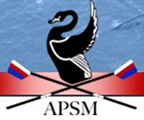 | APSM Rowing clubALbert park - south melbourne | rowing club |
South Melbourne Rowing Club
South Melbourne Rowing Club began as the Lake Rowing Club and was opened on 12 April, 1878 just west of the Lake Oval with its original colour being gold. The club’s first recorded wins came in 1879 at the Albert Park Regatta in a maiden eight, a maiden pair, and a maiden gig.
At the annual general meeting of 1883 the club had formally changed its name to South Melbourne Rowing Club and adopted the more familiar colours red and white, and the club continued with sporadic wins in maiden races until the early 1900s.
The year 1905 saw the beginning of some success for the club with a series of wins by crews that included A Richards and L Cazaly. Richards won the Victorian Champion Sculls in 1908-09 and represented Victoria in the 1909 Australian Champion Sculls, which was the same year that the club won the Junior Premiership.
Cazaly, from the well-known Cazaly sporting family, was the son of Melbourne Rowing Club sculler James Cazaly, and older brother to Roy, whose first wins for the club came in 1911 at age 14. Soon, however, the lure of Australian Rules Football caught the younger Cazaly’s attention, playing in the seniors for both St Kilda and South Melbourne, which were both based within Albert Park Lake at the time.
During this time, the committee was formed by many prominent businessmen and local city councillors. This continued until the First World War, which saw 30 club members enlist, many of whom returned to serve on the committee and become Life Members of the Club. This includes PJG Maher and AJ Crook, as well as GT Hastie, CB Heath and WA Graham.
The Club’s fortunes at regattas were not much changed, prompting the Club to change its name briefly to the Middle Park Rowing Club between 1936 and 1939.
After the Second World War, individual success came to a rower by the name of Jack Webster. In 1946 and 1947 he rowed bow in the winning Victorian crews for the King’s Cup, stroked by Richmond’s Walter Lambert. He rowed very successfully with Lambert for several years, keeping their stroke and bow combination at the 1948 London Olympics in the Men’s Coxed Four, and at the 1950 British Empire Games in Auckland in the Men’s Coxless Pair where they won gold. Jack continued rowing with the club until his death in 2009.
Success at club level eluded the Club until the 1950s, when South Melbourne won the Lightweight Premiership in 1956.
Two years later, in 1958, the club boated a crew which was selected in its entirety to represent Victoria at the King’s Cup Regatta for the first interstate lightweight four event which was held in Penrith that year. The trophy for the event, donated by the Penrith City Council, was subsequently named the Penrith Cup. The crew consisted of Bob Tanner (bow), Harry Stevens (2), George Taylor (3), Lance Gallagher (stroke), Eddie Jones (cox) and Wal Graham (coach).
Two years later, club member Ron Taylor represented Australia at the 1960 Rome Olympics as a heavyweight boxer.
By the 1960s, the Club was known as much as a social hub as it was a sporting organization. The Club began putting on dances on Saturday nights, which brought in money for new boats.
In 1964 Keith Tyrrell joined the Club along with Brian Dalton, who coached junior rowers as well as state and national crews. Brian’s success as a coach included coaching Australian crews for the World Championships in 1980, 1984-86, and 1990-93, Commonwealth Games in 1986 and 10 years later the Australian Women’s Eight for the Atlanta Olympics.
A new era had dawned by the late 1970s, when Peter Watson and Bruce Lonergan joined – along with the Club’s first female rowers, who won the Women’s Junior Premiership in 1986.
By 1990, however, falling membership meant the Club entered fewer and fewer regattas, which lead to discussions with Albert Park, which was also struggling to continue operating.
Back to History